Photos and text by Stan Lee
Mai Po Nature Reserve
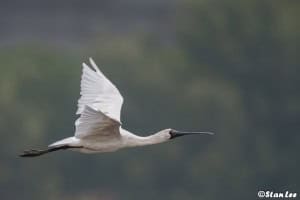
Mai Po Reserve is a diverse wetland spanning 2,700 hectares and managed by the World Wildlife Fund (WWF). It is a wetland with international importance. The site is renowned for supporting thousands of migratory waterbirds and raptors yearly. It comprises mangroves, shallow shrimp ponds, freshwater swamps, and dredging ponds with several bird hides. There is also a mudflat located northwest of the reserve. I always enjoy looking out from the Mudflat hides to watch the spectacular scene of the vast number of shorebirds approaching to feed on the mudflat when tides go up or down. More than 350 species have been recorded here. Walking from the entrance to the bird hides takes at least 30 minutes. Walking to the mudflat will take about one hour
Permits and Tours. The Mai Po Nature Reserve is listed in the Wild Animals Protection Ordinance of Hong Kong, and access to the area is restricted. A permit is required to visit. For details on applying for a permit, please visit this website.
Group tours are available. If you book a group tour, they will get the permit for you. Tours are available in English and Cantonese. But be sure to ask about the language, as not all tours are in English. Don’t panic when you see the huge price; this is in Hong Kong dollars.
Transportation: Take the MTR Sheung Shui Station Exit A2. Then, catch a taxi to the main entrance, which is located at the World Wide Fund For Nature Hong Kong’s car park.
Other Birding Hotspots in Hong Kong
Hong Kong, one of the most densely populated cities in the world, with high rises soaring up into the sky everywhere, is an excellent place for bird-watching and photographing activities. Over 500 different bird species have been recorded here. It is about 1/12 of the global number. Hong Kong has one of the most efficient public transportation systems in the world. Unlike other places, taxis are available everywhere or just a phone call away. Most birding places are accessible by public transportation/taxi within 90 minutes. Since car parks are costly and sometimes difficult to find, it is more convenient and cost-effective to use public transportation than renting a car. Here are some of the birding hotspots.
Kowloon Park
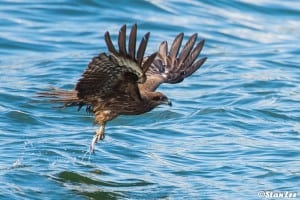
Kowloon Park, situated in downtown Tsim Sha Tsui, is a popular place among both local and overseas birdwatchers. This city park attracts many species of wild birds, over 100 of which have been recorded. It is a hot spot for watching passing migrants in spring and autumn.
Transportation: Take MTR Tsim Sha Tsui station exit on A1.
Tai Po Kau Nature Reserve
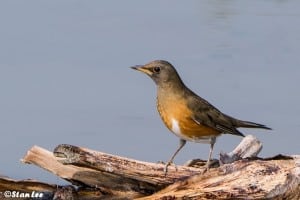
Tai Po Kau is one of the most mature and extensive secondary forests in Hong Kong, and it is located near the Tai Po Market MTR station. The forest embraces secondary forest, vegetation, and native trees, so it is the best place to view forest birds like flycatchers, minivets, warblers, and thrushes. Over 160 species have been recorded here. There are four colour-coded walk paths in the reserve. I prefer the red and blue paths, which are the shortest routes.
Transportation: Take bus no.70, 72, 73A or 74A from Tai Po Market and get off at the “Chung Tsai Yuen” stop; cross the road to the other side and walk along the concrete road. Alternatively, I prefer to take a taxi from Tai Po Market MTR station and tell the taxi driver to go to Tai Po Kau. The taxi fare should be less than HKD25.
Shing Mun Reservoir
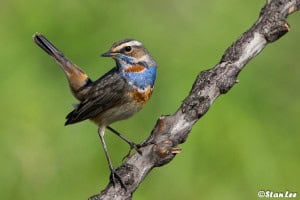
Shing Mun Reservoir is located near Tai Po Kau, so many species appearing in Tai Po Kau can also be found here. Walking here is relatively easy, as this place has an extensive network of relatively flat footpaths. Over 250 species have been recorded here.
Transportation: Take green mini-bus no. 82 from Siu Wo Street near Tsuen Wan MTR station, terminating at Shing Mun Country Park.
Long Valley
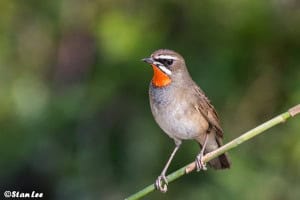
Long Valley, with an area of 25 hectares, is the largest and the most intact piece of agricultural freshwater wetland in Hong Kong. The high diversity of wetland habitats provides shelter and food for many organisms, such as amphibians, reptiles, insects and particularly wetland-dependent bird species. During migration season, many different species stop here for a short period to refuel. Over 250 species have been recorded here. This is one of my favourite hotspots for photographing birds because of its open field, which enables me to get closer to the birds for better shots.
Transportation: Take green mini-bus no. 51K at the mini-bus stand between Sheung Shui MTR station and Landmark North and get off at the terminus in Ho Sheung Heung. Then, walk for about 3 minutes in the direction of the Beas River, cross the Beas River bridge and reach Long Valley.
Sai Kung Pier

If Black Kite and White-bellied Sea Eagle are what you are searching for, this is the place. From September to May, there are many Black Kites seeking food by the pier as fishermen clean the fish that they sell to the customers at the pier. The internals of the fish become desirable food for the Black Kites. You can photograph the Black Kites as they skim over the water, grabbing their food and occasionally live fish.
Looking east from the pier, a small island named Yeung Chau is about 800 meters away. A couple of White-bellied Sea Eagles nest on the island. If you are patient or lucky enough, you can see them flying to and from the island. If you are very lucky, they may even fly close to the pier and catch fish just by the side of the pier. Transportation: Take the green mini-bus 1A at MTR Choi Hung Station Exit C1.
(M) Write a review
You must be logged in to submit a review. Go to Members page to Log-in or Register
Stan Lee
Most people think of Hong Kong only as a crowded city, but there are excellent wildlife viewing opportunities there. In addition to the many birds, I saw monkeys and pink dolphins. Text and all photos are copyrighted by Stan Lee. Stan Lee is a first-class bird photographer, formerly of Hong Kong, currently living in Canada. Thank you, Stan, for this page and for being my guide in Hong Kong.
Visa Information
Nationals of Canada, USA, Europe, Australia and New Zealand do not require a visa to enter Hong Kong for 90 days or less (six months for UK nationals). You will need six months’ validity on your passport. Although you don’t need a visa for Hong Kong, you need one for onward travel into mainland China. You can get this in a few days in Hong Kong. This is easy for British Commonwealth and European residents but more complicated for Americans. I suggest Americans get their visa from the Chinese embassy before leaving the United States. You may require additional documents or have trouble getting a visa in Hong Kong. A visa is not required for Americans staying in Hong Kong only and not in other parts of China. Check for the latest information as Chinese visa requirements change often.
Touring Hong Kong
Besides birding, there are many things to see and do in Hong Kong. It is not just a city. There is a jungle, monkeys, and pink dolphins.
For information on touring Hong Kong click here.
For information on the pink dolphins click here.
(BT)
The letters BT appear on many pages of this website. This indicates that Birdtripper has visited this location.
Write for Birdtripper
This story and photos by Stan Lee. If you have a birding story, you can also be a Guest Blogger. Contact us.